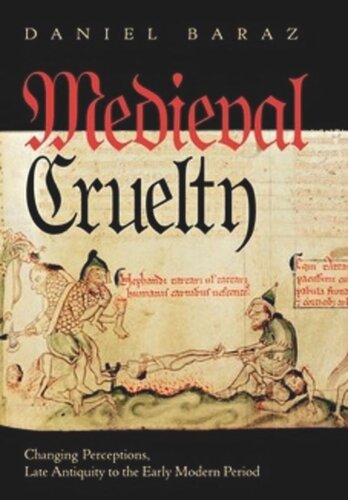

Most ebook files are in PDF format, so you can easily read them using various software such as Foxit Reader or directly on the Google Chrome browser.
Some ebook files are released by publishers in other formats such as .awz, .mobi, .epub, .fb2, etc. You may need to install specific software to read these formats on mobile/PC, such as Calibre.
Please read the tutorial at this link: https://ebookbell.com/faq
We offer FREE conversion to the popular formats you request; however, this may take some time. Therefore, right after payment, please email us, and we will try to provide the service as quickly as possible.
For some exceptional file formats or broken links (if any), please refrain from opening any disputes. Instead, email us first, and we will try to assist within a maximum of 6 hours.
EbookBell Team

4.7
106 reviewsThe Middle Ages are often thought of as an era during which cruelty was a major aspect of life, a view that stems from the anti-Catholic polemics of the Reformation. Daniel Baraz makes the striking discovery that the concept of cruelty, which had been an important issue in late antiquity, received little attention in the medieval period before the thirteenth century. From that point on, interest in cruelty increased until it reached a peak late in the sixteenth century.Medieval Cruelty's extraordinary scope ranges from the writings of Seneca to those of Montaigne and draws from sources that include the views of Western Christians, Eastern Christians, and Muslims. Baraz examines the development of the concept of cruelty in legal texts, philosophical treatises, and other works that attempt to discuss the nature of cruelty. He then considers histories, martyrdom accounts, and literary works in which cruelty is represented rather than discussed directly. In the wake of the intellectual transformations of the twelfth and thirteenth centuries, an increasing focus on the intentions motivating an individual's acts rekindled the discussion of cruelty. Baraz shows how ethical thought and practice about cruelty, which initially focused on external forces, became a tool to differentiate internal groups and justify violence against them. This process is evident in attacks on the Jews, in the peasant rebellions of the later Middle Ages, and in the Wars of Religion.